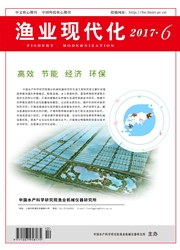

 中文摘要:
中文摘要:
安全高效的保活运输是保持鱼类鲜度的有效方式,既能满足消费者的需求,又可以提高企业的经济效益.介绍了有水运输和无水运输两种鱼类保活运输的技术方法,并对两种方法的优劣点进行了比较;阐述了鱼体体质、温度、水质(pH、溶氧、氨氮和代谢废物浓度)以及其他因素对鱼类运输存活率的影响;最后提出了现阶段鱼类保活运输存在的一些问题和应对措施,并对其发展前景进行了展望.根据对现有文献资料进行的分析,认为利用生态冰温法辅以二氧化碳作为麻醉剂进行无水运输将是今后鱼类保活运输研究和应用的重点.此外,开发无氧保活运输方法及相应的高效运输装备也应重点关注.这些都将有助于实现我国渔业现代化的更快发展.
 英文摘要:
英文摘要:
Safe and efficient live transportation is an effective way to keep the freshness of fish,which couldbetter meet the needs of the consumers while increasing the economic benefit of the enterprises.In this paper,two kinds of live transport,i.e.water or water-less transport were reviewed,the advantages and disadvantages ofthe two transportation methods were compared,the effects of fish body constitution,temperature,water quality(pH,dissolved oxygen,ammonia-nitrogen and metabolic concentration) and other factors on the survival rateof the transported fish were elaborated,and then some problems existing in live fish transport were pointed outand the countermeasures proposed.Through the analysis of the available data,it is believed that the water-lesstransportation using ecological ice temperature supplemented with carbon dioxide as an anesthetic would be thefocus of future research and application;in addition,the development of anaerobic live transport and the relatedhigh- efficient transport equipment also need special attention; and all these will contribute to the fasterdevelopment of China's fisheries modernization.
 同期刊论文项目
同期刊论文项目
 同项目期刊论文
同项目期刊论文
 De novo assembly and characterization of foot transcriptome and microsatellite marker development fo
De novo assembly and characterization of foot transcriptome and microsatellite marker development fo Molecular cloning, characterization, and expression analysis of a heat shock protein (HSP) 70 gene f
Molecular cloning, characterization, and expression analysis of a heat shock protein (HSP) 70 gene f Estimated genetic parameters for growth-related traits in large yellow croaker Larimichthys crocea u
Estimated genetic parameters for growth-related traits in large yellow croaker Larimichthys crocea u 期刊信息
期刊信息
